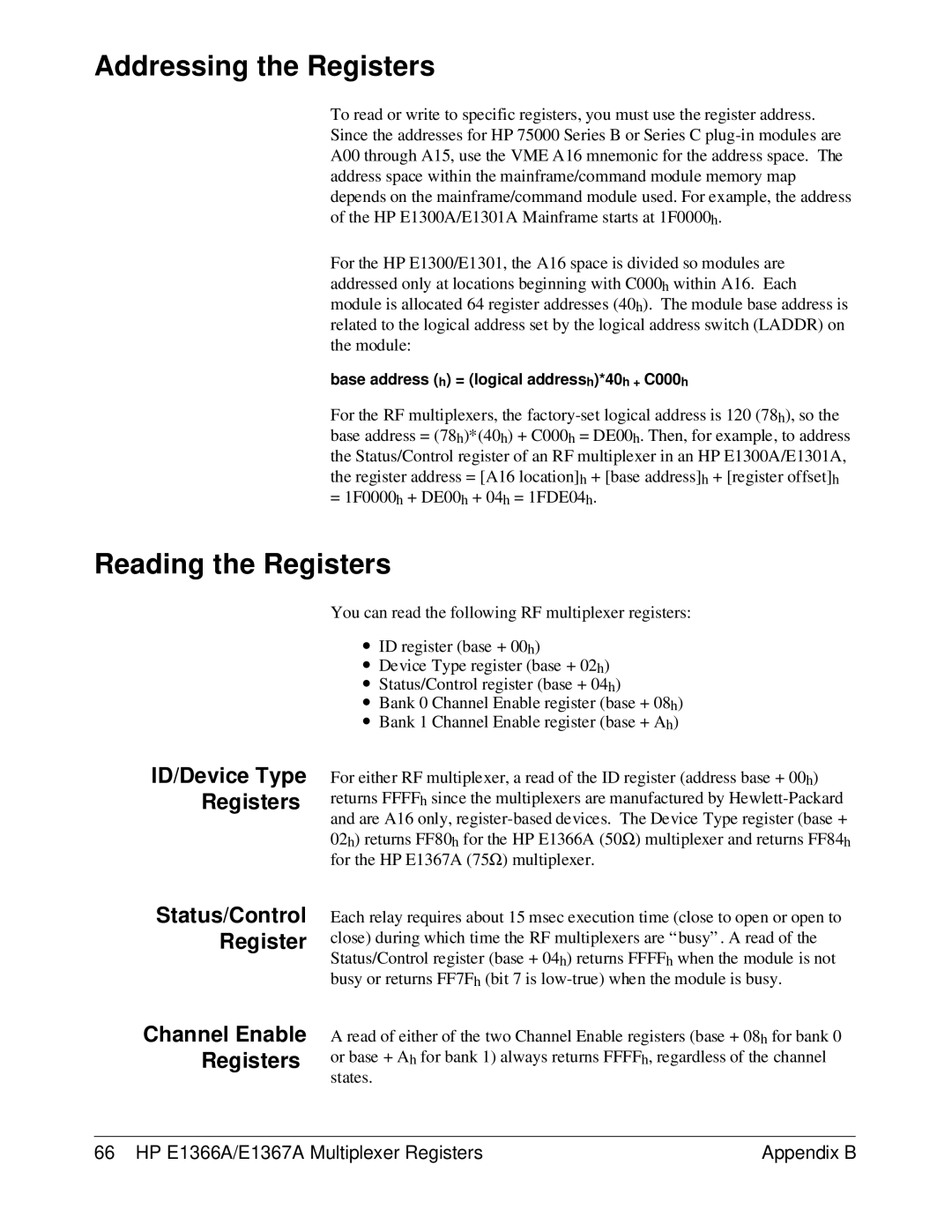Addressing the Registers
To read or write to specific registers, you must use the register address. Since the addresses for HP 75000 Series B or Series C
For the HP E1300/E1301, the A16 space is divided so modules are addressed only at locations beginning with C000h within A16. Each module is allocated 64 register addresses (40h). The module base address is related to the logical address set by the logical address switch (LADDR) on the module:
base address (h) = (logical addressh)*40h + C000h
For the RF multiplexers, the
Reading the Registers
ID/Device Type Registers
You can read the following RF multiplexer registers:
∙ID register (base + 00h)
∙Device Type register (base + 02h)
∙Status/Control register (base + 04h)
∙Bank 0 Channel Enable register (base + 08h)
∙Bank 1 Channel Enable register (base + Ah)
For either RF multiplexer, a read of the ID register (address base + 00h) returns FFFFh since the multiplexers are manufactured by
Status/Control Register
Channel Enable Registers
Each relay requires about 15 msec execution time (close to open or open to close) during which time the RF multiplexers are “busy” . A read of the Status/Control register (base + 04h) returns FFFFh when the module is not busy or returns FF7Fh (bit 7 is
A read of either of the two Channel Enable registers (base + 08h for bank 0 or base + Ah for bank 1) always returns FFFFh, regardless of the channel states.
66 HP E1366A/E1367A Multiplexer Registers | Appendix B |
